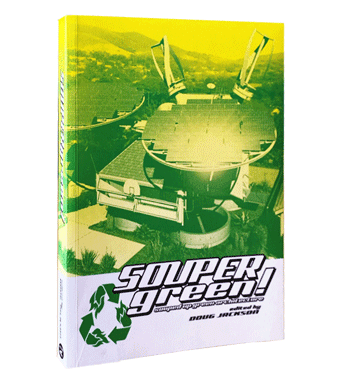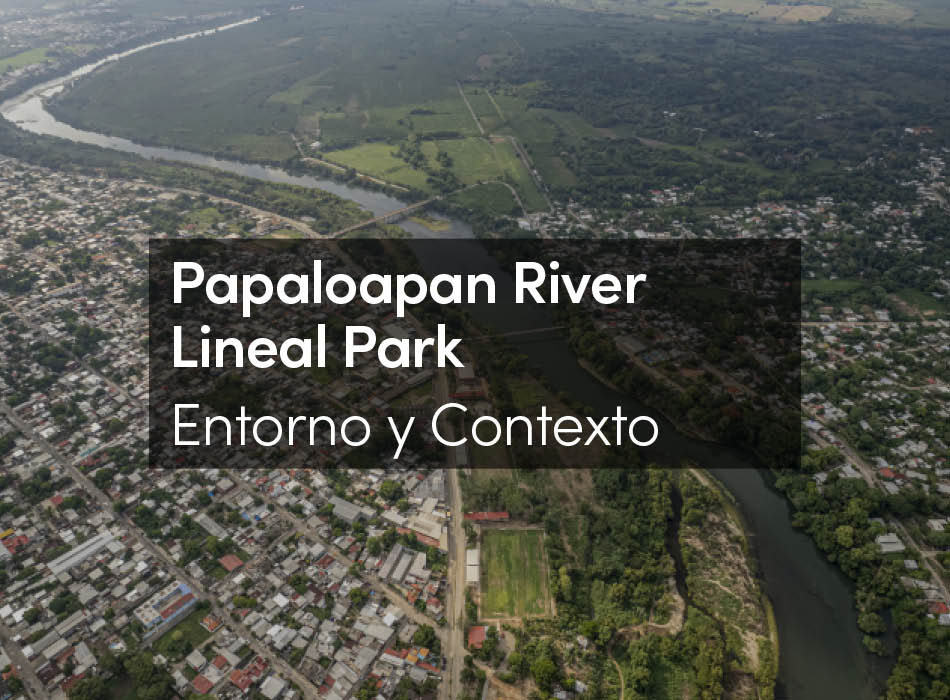It is now beyond question that the global environmental crisis is the singular issue that will define the work of architects in the 21st century, if not beyond—an era that has been recently, and ominously, characterized as the Anthropocene.1 This term, proposed to signify the geological epoch defined by humanity’s radical transformation of the planet, is also a long-overdue acknowledgement that the environment is inseparably conflated with the world constructed by humanity. It is not only a recognition that the scope of human activity has finally achieved the capacity to fundamentally alter the geophysical processes of the planet, but also a realization that the environment itself has always been a human construction rather than an a priori condition.
With etymological roots in the acts of surrounding and enclosing, the environment is both a space and a representation: it situates humans within a version of the world, and thereby defines the manner in which that world is understood, experienced, and engaged.2 The overwhelming tendency to misunderstand the environment as if it were the actual world—unmediated by any cultural or perceptual framework and instead able to be directly experienced, measured, and manipulated—constitutes a form naïve realism that erroneously privileges a human conception of the world, and places humanity at the center of that world.
This anthropocentric space known as the environment is actually dependent on a number of problematic assumptions about the real world that, in turn, partially describe its difference from it. These include the assumption that the world is a context separate from and in service to humanity as a material and energy resource, that it is isomorphic with the world known through scientific observation, that it is fundamentally homeostatic rather than entropic, and that human activity can be moderated through technology in order to preserve this homeostatic condition.
Consequently, there are many aspects of the actual world that fall outside of this anthropocentric framework—either because they exist at spatial and temporal scales which escape human perception, or because they are obscured or distorted by the framework of the environment as it is currently understood.3 Global warming, sea level rise, and ozone depletion are examples of these. When these conditions disturb the apparently stable anthropocentric space known as the environment, they threaten its viability and place it in a state of crisis.4 In addition, when they are instigated or otherwise affected by human activity, their fundamental inscrutability also makes the degree of their underlying human causality difficult to recognize.
While technology is humanity’s primary instrument for engaging the environment, it is not simply a means to an end, but rather is also the means by which the environment is perceived and represented in accordance with those ends. Not surprisingly, therefore, the environmental crisis has been narrowly framed as a problem to be solved only through the application of scientific and technical expertise, the supposed efficacy of which is evaluated through measurable performance criteria. This has resulted in an overwhelming tendency to view the world as a mere collection of resources to be quantified and technologically sustained for human use, rather than a dynamic and emergent milieu within which humanity’s habits and behaviors must be continually negotiated.5 In addition, it leaves unexamined these habits and behaviors—as well as the fundamental perceptual frameworks that underlie them—and instead relies on technology as a Deus ex machina to hopefully preserve humanity’s unsustainable tendencies through an apparent mitigation of their negative effects.
Although these technological, perceptual, and cultural dimensions of the environment mirror the broad spectrum across which the architectural discipline has historically engaged society, it has for the most part ignored the opportunity to address the significant cultural and perceptual aspects of the environmental crisis, and has elected instead to simply match society’s narrow techno-functionalist perspective.6 This severe reduction in architecture’s scope is evident in the vast number of works that assert their supposed ecological value based solely on resource efficiency—achieved through the uncritical application of “green” technologies and materials, and measured and verified through LEED evaluation and certification. In this regard, the environmental crisis can also be understood as a disciplinary one.
 Other Performances of Technology
Other Performances of Technology
Insofar as architecture is more than simply a functionalist enterprise, however, it has other means by which to engage the issue of the environment and humanity’s relationship to it. Of all of the disciplines and expertise being brought to bear on the ecological crisis, architecture is the only one that has the ability to produce truly transformative spaces and experiences that have the potential to change the way that individuals think, feel, and act. Given the environment’s fundamental basis as a constructed space, architecture’s unique spatial expertise could therefore be directed at the design of alternative environmental spaces and scenarios—ones that might revise humanity’s understanding of the environment and sponsor new forms of engagement with it.
The manner in which the architectural discipline views environmental technologies and their potential application is crucial in this regard. Since technology stands between humanity and the world, both as an instrument of action as well as perception, it can perform in either capacity. Within the context of architecture, therefore, it need not function only as an agent of environmental control, but could instead be the means by which architectural space might afford new environmental perceptions and experiences. In adopting such an approach, architecture would finally escape the unfavorably narrow evaluation of its environmentally sensitive works from the standpoint of their quantitative performance, wherein such works are assessed only according to their ability to satisfy certain measurable criteria. Instead, the performance of these works would be more qualitative in nature—as in the performance of an actor. As such, they would be designed to bring to life new versions of reality, and would thus be judged according to their ability to elicit within the public a deep appreciation of and sympathy for the versions of reality they are staging. Accordingly, qualities such as legibility, drama, and theatricality would become far more important criteria than the mundane metrics of functionality by which these works might otherwise be evaluated. In this shift from quantitative to qualitative environmental performance, therefore, these works of architecture would grow beyond measure—and in their resulting immeasurability, they would have the potential to become super.
Souping-Up Green Architecture
Just as Superman was “faster than a speeding bullet,” and “more powerful than a locomotive,” super-ness is defined by qualitative comparisons—rather than by precise measurement. After all, any attempt to scientifically quantify Superman’s speed in miles per hour or his power in kilojoules per second, for example, would demystify his abilities by neutralizing their qualities—qualities which are supposed to be so extraordinary that they can only be truly appreciated by being performed in an actual context. A superhero’s attributes are thus understood to exceed simple measurement, and their effectiveness within a particular context cannot therefore be calculated in advance.7 Rather, they must continually be put to the test—in a series of epic struggles.
Souping-up is form of design concerned with the expression of super-ness. Known primarily from the art of transforming unassuming automobiles into high-performance hotrods, souping-up is distinguished not as much by the metrics of speed and power by which the resulting hotrod might be measured, but more so by the dramatic manner in which the extraordinary effort to achieve that speed and power is expressed. Whereas a sports car expresses its speed as a scientifically-determined, and thus unsurprising, outcome of its carefully calibrated aerodynamic form, a souped-up hotrod dramatizes its speed as an epic struggle against factors that might otherwise hinder it: the ordinariness of the original vehicle, its inherent inertia and obvious lack of aerodynamic form, the friction of the road, and so on. These are overcome not through the application of scientific principles aimed at producing a form that can move at high speed with apparent effortlessness, but rather through a series of spectacular and expressive upgrades that showcase the extraordinary effort involved—such as the prominently exposed engine block, the pronounced and unmuffled exhaust pipes, and the oversized tires.8 Thus, unlike the sports car, which delivers the promise of its speed through its calculated form, and thus obviates the need for any further demonstration, the souped-up hotrod’s aesthetic treatment cultivates an expectant curiosity about its abilities that can only be satisfied by a staged performance.
The sports car’s aerodynamic form attempts to reconcile the desire for speed with environmental forces in the same way that most “green” architecture and technology attempts to reconcile the contemporary habits and behaviors of humanity with the environment. In both cases, the apparent resolution, or “fit”—supposedly ensured through calculation and measurement— simply affirms and normalizes the environmental context. The Anthropocene, however, marks the end of the era in which it was possible to believe in a stable and normalized environment. Insofar as it is the end of the environment as we know it, it is also the end of the notion that environmental fitness can be scientifically calculated and technologically ensured. As such, it is also the end of the naïve presumption that an environmentally responsible architecture can be premised on such a notion.
Therefore, in contrast to the prevailing strategies of “green” or “sustainable” architecture, which predetermine and formalize a supposed congruency with the environment through measurement and calculation, a souped-up green architecture expressively and dramatically puts the very idea of the environment, as well as humanity’s relation to it, into play. It recognizes that environmental fitness cannot be presumed in advance, but rather must be enacted as a daily performance. SOUPERgreen architecture does this by staging contemporary life as an almost superheroic struggle between culturally ingrained perceptions and habits and a dynamic milieu of environmental forces.














